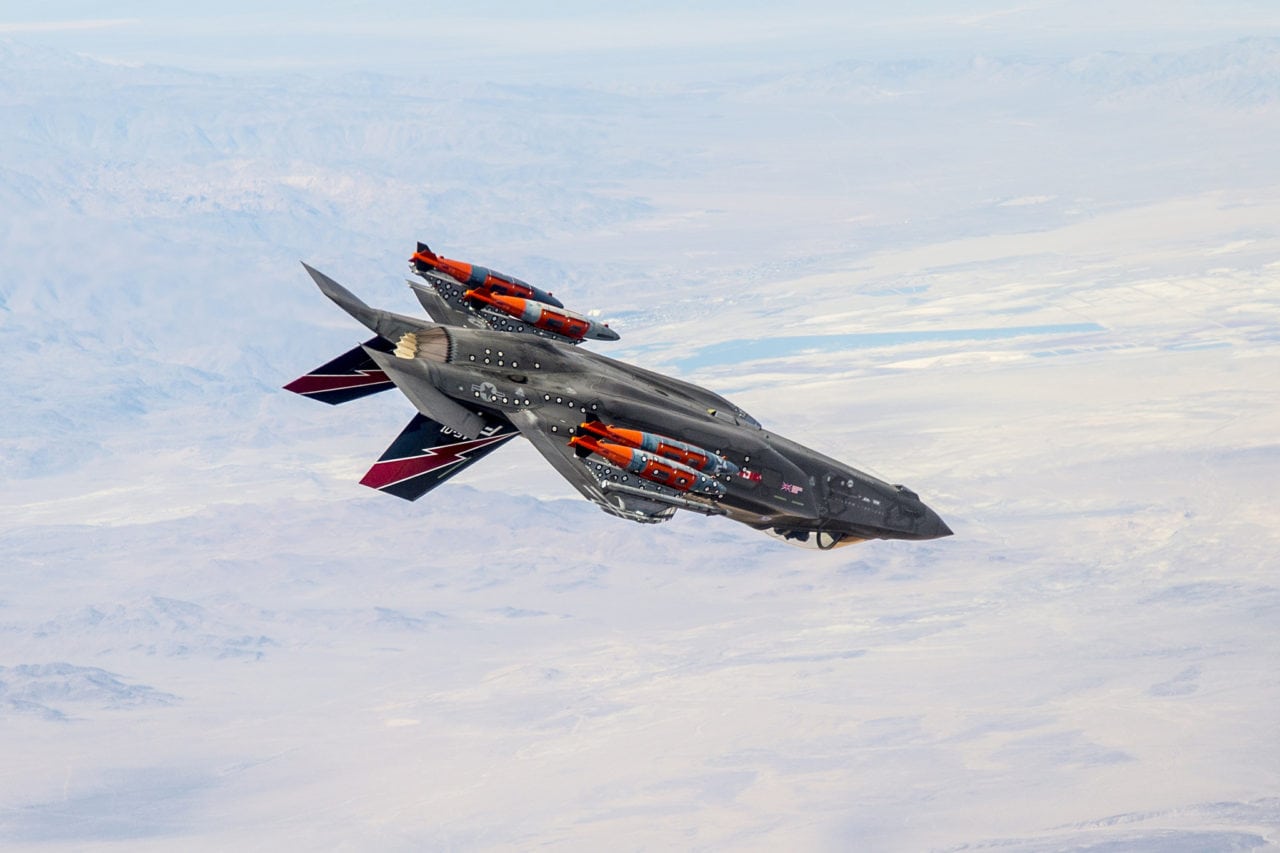
An F-35A. Photo courtesy of Lockheed Martin
Since the beginning of the F-35 Lightning II program, Lockheed Martin and its more than 1,600 suppliers have focused on providing technology upgrades simultaneously in massive upgrade packages. According to a program update given by the OEM’s program lead at the 2018 Farnborough International Air Show, the new approach to software and hardware upgrades will shift toward agility.
Greg Ulmer, Lockheed Martin VP and F-35 program manager, describes the company’s previous methodology to upgrading the F-35 as a “big bang approach.” In the new approach, customers such as the U.S. military will be directly involved in collaborating with Lockheed and its partners on new upgrades. The goal is faster upgrades in smaller increments, to keep the fighter’s evolution and response to threats constant.
“One of the biggest elements of ‘agile’ is you’re really pulling in the warfighter to be a part of the development cycle, so, rather than do the development cycle and then present what you developed to the warfighter, the warfighter actually puts down with the coders, with the software developers and, as they develop it, they insert themselves,” Ulmer said.
Agile project management development is best described as a collaborative approach to software development, where the developer and end user continually improve and rapidly update their products.
Lockheed has already been using an agile approach on other platforms, such as the F-22 and on the F-35’s Autonomic Logistics Information System known as ALIS. He said the new approach will require a change in the traditional defense acquisition process used for the joint strike fighter.
“It’s not just an industry change, it’s also a defense/government change. We’re going to have to contract differently, we’re going to have to execute the program; we’re all tailored to a traditional 5001 DOD acquisition kind of approach, we’re going to have to refine and re-tailor that approach to make sure we support the actual construct,” said Ulmer.
The new approach to F-35 upgrades is already happening, and F-35 program observers can expect to see the switch to the agile approach occur with a number of updates scheduled to occur between low-rate initial production (LRIP) 10 and LRIP 14. The F-35’s third technology refresh will occur at LRIP 15, according to Ulmer.
Two of the more immediate technology upgrades being introduced with an agile approach include the F-35’s new distributed aperture system (DAS) and automatic ground collision avoidance system (Auto-GCAS).
Ulmer said the DAS system will double the performance of the F-35’s existing DAS and will also reduce the weight of the F-35 by 15 pounds, a perpetual concern for the heavy jet. That will lead to less power consumption, and allow that power to be redistributed to other existing or new systems.
Auto-GCAS, which automatically takes over steering in the event that a pilot is incapacitated or otherwise unable to steer and the jet is on a collision course with the ground, is already standard on the F-16, where Ulmer said it has saved several lives. That Auto-GCAS system will be the same one that Lockheed plans to integrate into the F-35 by the end of 2019.